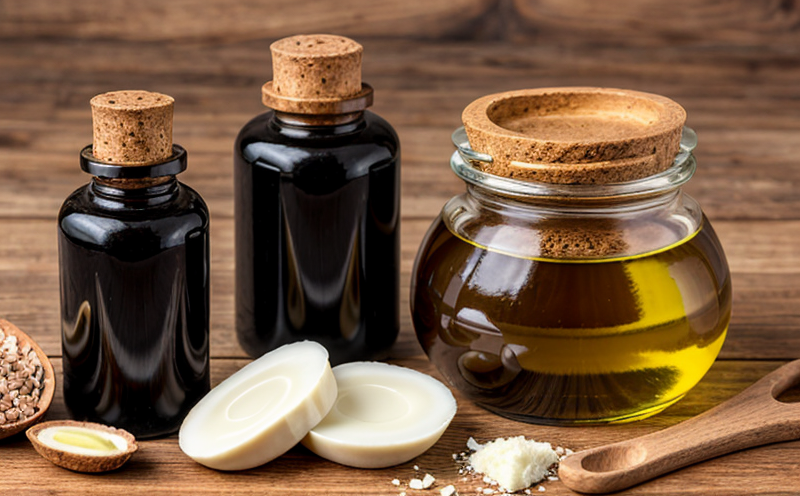ISO 19858 Acrylamide Residue Testing in Oil-Fried Foods
The presence of acrylamide residues in oil-fried foods is a critical concern for food safety and quality. Acrylamide, formed during high-temperature cooking processes such as frying, has been identified by the World Health Organization (WHO) as potentially carcinogenic to humans. ISO 19858 provides a standardized method to quantify acrylamide residues in fried foods, ensuring compliance with international food safety standards and protecting public health.
Our laboratory offers comprehensive testing services for acrylamide residues according to ISO 19858, catering specifically to the needs of quality managers, compliance officers, R&D engineers, and procurement teams. This service is essential for manufacturers who strive to maintain high-quality products while adhering to stringent regulatory requirements.
Testing begins with the collection of a representative sample from the production line or storage facility. The sample undergoes rigorous processing steps, including homogenization and extraction, using validated methods that ensure accurate residue quantification. Our laboratory is equipped with advanced analytical instruments capable of detecting trace amounts of acrylamide in complex matrices.
The methodology outlined in ISO 19858 involves the following key steps:
- Sample preparation: Homogenization and extraction of the sample to release acrylamide compounds.
- Analysis: Quantification using liquid chromatography-tandem mass spectrometry (LC-MS/MS).
- Validation: Ensuring the method’s accuracy, precision, and robustness through calibration and quality control checks.
The results are reported in parts per million (ppm), providing a clear indication of acrylamide levels. Compliance with regulatory limits is critical for maintaining product safety and consumer confidence. Our laboratory adheres to the strictest standards, ensuring reliable and accurate test outcomes.
Our expertise lies not only in compliance but also in helping our clients understand the implications of acrylamide residues on their products. By offering insights into the formation mechanisms during frying processes, we assist food manufacturers in optimizing cooking parameters to minimize acrylamide generation. This proactive approach ensures that your products meet current and future regulatory requirements.
Understanding the significance of this test is crucial for maintaining a safe and high-quality product line. In addition to adhering to international standards, our laboratory ensures that every step of the testing process is conducted with precision and rigor. We provide detailed reports that include not only quantitative results but also recommendations for process improvements.
Why It Matters
The importance of acrylamide residue testing cannot be overstated, particularly in oil-fried foods. Acrylamide is a toxic compound formed during the high-temperature cooking processes used to produce fried products. Exposure to acrylamide has been linked to various health risks, including cancer and neurotoxicity.
Compliance with international standards such as ISO 19858 is essential for food manufacturers to ensure product safety and protect public health. Non-compliance can lead to recalls, legal actions, and damage to brand reputation. By conducting regular acrylamide residue testing in oil-fried foods, companies demonstrate their commitment to maintaining high-quality products.
Our laboratory plays a vital role in helping food manufacturers navigate the complexities of this test. We provide expert guidance on sample collection, preparation, and analysis, ensuring that every step adheres to ISO 19858 requirements. Our experienced scientists offer insights into process optimization, helping companies reduce acrylamide levels without compromising product quality.
Moreover, our testing services go beyond regulatory compliance by offering valuable data for research and development purposes. By understanding the formation mechanisms of acrylamide during frying processes, manufacturers can innovate new cooking methods that minimize acrylamide generation while preserving desirable food attributes.
Scope and Methodology
The scope of ISO 19858 testing encompasses a wide range of oil-fried foods, including but not limited to potato chips, French fries, fried chicken, and other deep-fried snacks. The test is designed to detect acrylamide residues in these products, ensuring they meet international safety standards.
The methodology outlined in ISO 19858 involves several key steps:
- Sample preparation: Thoroughly homogenize the sample and extract acrylamide using a validated solvent system.
- Analysis: Quantify acrylamide levels using liquid chromatography-tandem mass spectrometry (LC-MS/MS).
- Validation: Ensure method accuracy, precision, and robustness through rigorous calibration and quality control checks.
The results are reported in parts per million (ppm), providing a clear indication of acrylamide levels. Compliance with regulatory limits is critical for maintaining product safety and consumer confidence. Our laboratory adheres to the strictest standards, ensuring reliable and accurate test outcomes.
Understanding the significance of this test is crucial for maintaining a safe and high-quality product line. In addition to adhering to international standards, our laboratory ensures that every step of the testing process is conducted with precision and rigor. We provide detailed reports that include not only quantitative results but also recommendations for process improvements.
Our expertise lies not only in compliance but also in helping our clients understand the implications of acrylamide residues on their products. By offering insights into the formation mechanisms during frying processes, we assist food manufacturers in optimizing cooking parameters to minimize acrylamide generation. This proactive approach ensures that your products meet current and future regulatory requirements.
Why Choose This Test
- Promotes product safety: Ensures compliance with international standards like ISO 19858, protecting public health.
- Enhances brand reputation: Demonstrates a commitment to maintaining high-quality products and consumer confidence.
- Supports regulatory compliance: Helps companies navigate complex regulations related to acrylamide residues in fried foods.
- Facilitates process optimization: Offers valuable data for R&D, enabling manufacturers to innovate new cooking methods that minimize acrylamide generation.
- Promotes transparency: Provides detailed test reports with actionable recommendations for process improvements.
- Ensures accuracy and reliability: Utilizes advanced analytical instruments and rigorous quality control measures.
The ISO 19858 testing service offered by our laboratory is a critical tool in maintaining product safety and compliance. By choosing this test, food manufacturers can ensure that their products meet the highest standards of quality and safety.





